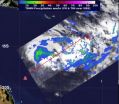(Press-News.org) UAlberta medical researchers and their American colleagues have discovered that the "gateway" known to control the movement of molecules in and out of a cell's nucleus appears to play another critically important role – one no one had noticed until now.
These "gateways" have a second key job in a cell – the ability to control the structure of chromosomes and the DNA linked to those chromosomes. This impacts what genes produce or express. The discovery gives scientists a new way to investigate the triggers for various kinds of disease, says Richard Wozniak, the principal investigator with the Faculty of Medicine & Dentistry, who worked on the discovery with collaborators from the Institute for Systems Biology (Seattle).
"This discovery may explain links between disease and defects in these gateways," he says.
"Our studies provide new insights into how the nucleus is organized and how the genetic material it houses is used, including important information about the jobs genes do. When cells have to adapt to their environment, they need to change their gene expressions pattern. If this isn't done right, diseases such as cancer or heart disease occur. Our work also provides insight into why many viral infections target this gateway for their survival."
The research team's discovery was recently published in the peer-reviewed journal, Cell.
Wozniak and his team are continuing their research in this area. They want to learn more about this new mechanism when it functions properly, and what causes it to malfunction.
Uncovering the key players in this new mechanism are also key, he says.
"We want to understand how these gateways are functioning at a molecular level – what makes them capable of altering the structure of chromosomes and making other key changes? That is our next step," says Wozniak, who is a researcher with the Department of Cell Biology.
###
The Canadian Institutes of Health Research, the Howard Hughes Medical Institute, and Alberta Innovates – Health Solutions provided funding for the team's work.
Researchers discover 'gateway' in nucleus has a second important job no one noticed before
2013-03-08
ELSE PRESS RELEASES FROM THIS DATE:
New form of animal communication discovered
2013-03-08
Sniffing, a common behavior in dogs, cats and other animals, has been observed to also serve as a method for rats to communicate—a fundamental discovery that may help scientists identify brain regions critical for interpreting communications cues and what brain malfunctions may cause some complex social disorders.
Researchers have long observed how animals vigorously sniff when they interact, a habit usually passed off as simply smelling each other. But Daniel W. Wesson, PhD, of Case Western Reserve University School of Medicine, whose research is published in Current ...
Is this peptide a key to happiness?
2013-03-08
What makes us happy? Family? Money? Love? How about a peptide?
The neurochemical changes underlying human emotions and social behavior are largely unknown. Now though, for the first time in humans, scientists at UCLA have measured the release of a specific peptide, a neurotransmitter called hypocretin, that greatly increased when subjects were happy but decreased when they were sad.
The finding suggests that boosting hypocretin could elevate both mood and alertness in humans, thus laying the foundation for possible future treatments of psychiatric disorders like ...
U of T engineering breakthrough promises significantly more efficient solar cells
2013-03-08
TORONTO, ON – March 7, 2013: A new technique developed by U of T Engineering Professor Ted Sargent and his research group could lead to significantly more efficient solar cells, according to a recent paper published in the journal Nano Letters.
The paper, "Jointly-tuned plasmonic-excitonic photovoltaics using nanoshells," describes a new technique to improve efficiency in colloidal quantum dot photovoltaics, a technology which already promises inexpensive, more efficient solar cell technology. Quantum dot photovoltaics offers the potential for low-cost, large-area solar ...
Education's protective effect on marriage differs between white and African-American women
2013-03-08
NEW BRUNSWICK, N.J. – Married couples who have attained higher levels of education are less likely to divorce than less-educated couples, but a new study conducted at Rutgers School of Social Work points to significant racial differences.
"African-American women don't seem to enjoy the same degree of protection that education confers on marriage," said Jeounghee Kim, assistant professor at the school. "For white Americans, higher education is related to a lower chance of divorce, and this protective effect of education on marriage increased consistently among the recent ...
Prairie dogs disperse when all close kin have disappeared
2013-03-08
FROSTBURG, MD (March 7, 2013)—Prairie dogs pull up stakes and look for a new place to live when all their close kin have disappeared from their home territory--a striking pattern of dispersal that has not been observed for any other species. This is according to a new study published in Science by behavioral ecologist John Hoogland, Professor at the University of Maryland Center for Environmental Science's Appalachian Laboratory. He has been studying the ecology and social behavior of prairie dogs in national parks in Arizona, South Dakota, and Utah for the last 40 years.
For ...
Drugs targeting blood vessels may be candidates for treating Alzheimer's
2013-03-08
University of British Columbia researchers have successfully normalized the production of blood vessels in the brain of mice with Alzheimer's disease (AD) by immunizing them with amyloid beta, a protein widely associated with the disease.
While AD is typically characterized by a build-up of plaques in the brain, recent research by the UBC team showed a near doubling of blood vessels in the brain of mice and humans with AD.
The new study, published online last week in Scientific Reports, a Nature journal, shows a reduction of brain capillaries in mice immunized with ...
Engineers develop techniques to boost efficiency of cloud computing infrastructure
2013-03-08
Computer scientists at the University of California, San Diego, and Google have developed a novel approach that allows the massive infrastructure powering cloud computing as much as 15 to 20 percent more efficiently. This novel model has already been applied at Google. Researchers presented their findings at the IEEE International Symposium on High Performance Computer Architecture conference Feb. 23 to 27 in China.
Computer scientists looked at a range of Google web services, including Gmail and search. They used a unique approach to develop their model. Their first ...
The future of ion traps
2013-03-08
Recently Science Magazine invited JQI fellow Chris Monroe and Duke Professor Jungsang Kim to speculate on ion trap technology as a scalable option for quantum information processing. The article is highlighted on the cover of this week's issue, which is dedicated to quantum information. The cover portrays a photograph of a surface trap that was fabricated by Sandia National Labs and used to trap ions at JQI and Duke, among other laboratories.
Trapped atomic ions are a promising architecture that satisfies many of the critical requirements for constructing a quantum computer. ...
NASA's TRMM satellite sees Tropical Cyclone 19P form
2013-03-08
NASA's Tropical Rainfall Measuring Mission satellite noticed areas of heavy rainfall in low pressure System 92P hours before it became the nineteenth tropical cyclone of the Southern Pacific Ocean.
NASA's TRMM satellite captured a look at the rainfall rates within low pressure System 92P on March 7 at 0023 UTC (March 6 at 7:23 p.m. EST), just hours before it became Tropical Cyclone 19P (TC 19P). TRMM data indicated that heavy rain was falling at a rate of 2 inches/50 mm per hour around the center of circulation, and that some of the thunderstorms were powerful as they ...
Trauma simulation technique makes better journalists
2013-03-08
This press release is available in French.
Montreal, March 7, 2013 – Just hours after the tragic shooting of 27 victims at Sandy Hook Elementary School, Twitter was overloaded with messages slamming reporters for interviewing children involved in the tragedy. While some of the journalists probably knew better but wanted the story at all costs, others were rookie reporters facing ethical decisions for the first time and unaware of the impact these interviews might have on the young survivors.
Past studies have documented that new journalists can cause a number of ...


